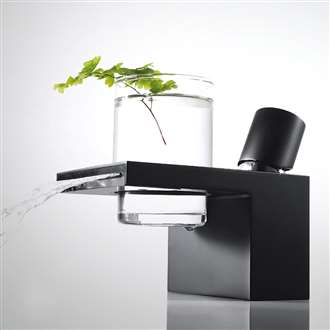Selecting your Faucets, Solid Brass nickel and satin finishes

One of the main factors that separates a good tub or shower faucets from the not-so-good is the material these faucets made of. " versus "ZMACK" for brass- or chrome-plated fittings. Faucets with die-cast zinc-alloy bodies cost less (typically starting at about $70) and deliver good durability. Zinc is the metal beneath most brass- and chrome-plated fittings. Because zinc corrodes when it contacts water, these faucets must be replaced when the plating wears off. Stay away from low-end faucets with plastic bodies. Though their low might be appealing, plastic simply doesn't hold up.Start by checking out the body, which encompasses the spout and controls. Solid-brass bodies will last the longest and those faucets will require the least care, even with hard water, which corrodes lesser metals. Typically theose solid brass faucets tend to cost the most. There is always an easy simple way to determine if a faucet is solid brass or not,just pick it up and if it feel heavy then it is made of solid brass. Fontana faucets are all-brass bodyt Finish is also crucial choice that determines not only how a faucet looks but also how easy it is to maintain. An electroplated chrome finish on a brass or zinc faucet looks good and lasts. If you opt for the warmth of natural brass, you'll avoid frequent cleanings with one of the proprietary lifetime finishes that block out oxidation. Faucets with nickel and satin finishes are easy to maintain. Their muted tones hide water spots, scratches and fingerprints. They also match door and cabinet handles more easily than brass. Chrome and combination chrome-and-brass finishes are popular for baths but require frequent cleaning to maintain their shine. With a spectrum of colors available, going with painted or enamel finishes is the easiest way to individualize a faucet and coordinate it with the rest of the bath. But because most of these finishes aren't bonded to the metal like plating, they chip and scratch relatively easily. Save them for less-used powder rooms and guest baths..
Selecting Your Faucet
Faucets are usually made from low-corrosive metals: pewter, copper, bronze, brass, stainless steel, and zinc alloys. Faucets can also be made of plastic.
If you're replacing only the faucets and not the sink, you have to know which size unit to buy. Start by removing the existing faucet and measuring the distance, or spread, between the holes in the sink. Small sink often have three holes that span 4 in.; they accommodate faucets that consist of a spout and separate handles connected by an escutcheon plate. Your new faucet must be configured the same way. The same holds for single-handle faucets and some two-handle units mounted in a single hole. Lavs with holes 6-, 8- or 12-in. spreads have separate handles and offer more replacement options. Next, consider who will use the faucet; this factor determines the style you choose as well as the inner workings you opt for. How many handles. Look for a single-handle faucet or one with lever handles for older users or anyone who has trouble turning round knobs. Also look for an "ADA Approved" (Americans With Disabilities Act) label. If you opt for round knobs, look for ones with rotational limit stops, which take just a quarter turn to open and close the valve inside. Small children have different needs. . You can also find single-handle models that let you adjust the flow mechanism to limit the amount of hot water available. What kind of valve. Control valves open and close water flow inside the faucet body when you move a handle or twist a knob. There are four kinds, each with its own strengths and weaknesses. Traditional two-handle faucets use compression valves, which control water flow with a rubber washer. Hard water and overtightening wear the washer, eventually causing leaks. However, the valve is easy to access, while washers cost only pennies to replace. Sleeve-cartridge valves are used in one- and two-handle faucets. Because all the working parts are contained in a single unit that lifts out quickly, sleeve-cartridge valves are easiest to repair. Each company has a different sleeve design, so be sure the replacement parts match your faucet. Replacements cost $10 to $20. Choose brass cartridges over plastic, if possible. Ball valves are exclusive to single-handle faucets. Introduced by Delta in 1954, they use a slotted-metal or plastic ball and spring-loaded seals to control flow. These systems are very durable and inexpensive to repair. But their many small parts make assembly difficult. Stick with metal ball valves and replacement kits (about $10), which hold up better than plastic ball valves. Ceramic-disk valves are considered the best by many experts. A two-part revolving disk turns water on and off depending on the alignment of its ports. Replacing the self-contained disk is fast and easy (about $15 to $20). And because the disk is impervious to sand and sediment, this is the system to choose if your water has lots of either. If impurities aren't a problem, other systems should be fine. Whichever control valve you consider, check the warranty. It's a good indication of how long the manufacturer expects the valve to last.
   
|